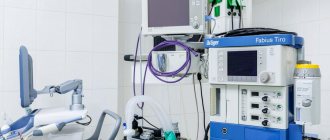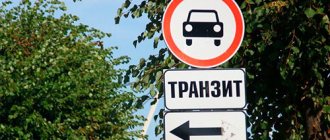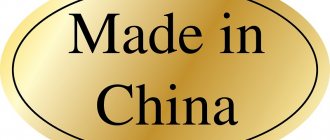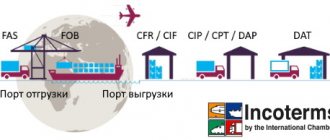Medical services
In Art. 149 of the Tax Code lists all goods and services that are not subject to value added tax. These include medical services and several other types of services that can be found in clinics:
- care for children and the sick;
- sale of a number of medical products.
A prerequisite for VAT exemption is that the clinic must have a license to provide these services.
There is another document that declares exemption from VAT for medical services in 2021 - this is the Decree of the Government of the Russian Federation No. 132 of February 20, 2001. The resolution provides a list of services in day and 24-hour hospitals, services of clinics and sanatoriums, services for conducting medical examinations and sanitary and hygienic measures.
Another document that explains the VAT exemption is the letter of the Department of Tax and Customs Policy of the Ministry of Finance of the Russian Federation No. 03-07-07/97292 dated December 12, 2019.
The concept of medical services is in Federal Law-323 “On the Protection of Citizens’ Health”. This document states that a medical service is a complex of medical interventions, including diagnosis, prevention, treatment of diseases and medical rehabilitation.
The law classifies medical services not subject to VAT as:
- services from the list that are provided under compulsory medical insurance;
- services for diagnosis, prevention and treatment from the list approved by Decree of the Government of the Russian Federation of February 20, 2001 No. 132;
- blood collection services;
- emergency medical services;
- services for medical staff on duty next to seriously ill patients;
- pathological and anatomical.
Cosmetic, veterinary and sanitary-epidemiological services are subject to VAT (except for those veterinary and sanitary-epidemiological services that are financed from the budget).
The Tax Code of the Russian Federation does not provide regulations regarding the form of payment for medical services, so services are not subject to VAT, regardless of cash or non-cash form of payment. The benefit also applies when providing services to citizens who are paid for by a legal entity - for example, their employers (letter of the Federal Tax Service of Russia dated March 27, 2013 No. ED-18-3 / [email protected] ) or insurance companies (letter of the Ministry of Finance of Russia dated June 17, 2015 No. 03-07-07/35004, dated 02/26/2013 No. 03-07-07/5466).
Keep records of exports and imports in the Kontur.Accounting web service. Simple accounting, payroll and reporting in one service
Changes in the list of products and children's goods in 2020-2021
From 07/01/2020, the import and sale of certain milk-containing products with milk fat substitute are taxed at a rate of 10%. Thus, the list of food products on the sale of which a tax must be paid at a rate of 10% includes the following milk-containing products with a milk fat substitute:
- drinks, cocktails and jelly;
- jellies, sauces, creams, puddings, mousses, pastes and soufflés;
- condensed canned food.
In addition, sales of milk-containing ice cream should also be taxed at a reduced rate. These changes are provided for by Government Decree No. 250 dated 03/09/2020.
In 2021, changes to Resolution No. 908, containing a list of products and goods for children subject to VAT of 10 percent, were introduced by resolutions of the Government of the Russian Federation:
- dated 01/30/2019 No. 58 (effective from 02/09/2019) - they added fish fillets and other fish meat (including minced meat) in fresh and chilled form to the list of products;
- dated 12/06/2018 No. 1487 (effective from 04/01/2019) - the list of amendments here is quite wide.
What exactly does the update in the list of goods with 10 percent VAT apply to? What specific products and children's products does it apply to? The full list of changes is as follows:
- in terms of food products: for live livestock and poultry, an indication has been added that the benefits do not include their breeding species;
- for fats and oils of animal origin, as well as for palm, coconut, palm kernel babassu and other vegetable oils, the marking on their intended use for food purposes is excluded;
- for soups and broths prepared with meat, it is clarified that they do not include not only vegetable ones, but also others that do not contain meat;
- ornamental rodents and reptiles have been added to the number of animals excluded from the list of consumers of boiled feed;
- it is clarified that other types of edible ice are also excluded from the list of benefits;
- the list includes hatching eggs, with the exception of breeding eggs;
- the composition of products for animal feeding has been detailed, and ornamental rodents and reptiles have been added to the list of those excluded from the list of consumers;
- The codes for onions and bulbous vegetables, as well as for other vegetables, have been clarified;
- the list of preferential knitwear and clothing products has been significantly expanded by adding the definition “similar” to the text of the description;
Thus, due to the changes in 2021, the list of goods with a VAT rate of 10 percent has expanded.
Not subject to VAT
First of all, the most important and vital medical products are not subject to VAT. They are listed in the Decree of the Government of the Russian Federation dated September 30, 2015 No. 1042, which is based on paragraph 2 of Article 150 of the Tax Code of the Russian Federation, paragraph 1 of paragraph 2 of Article 49 of the Tax Code of the Russian Federation. This is a closed list; it can only be changed or supplemented by the officials themselves, which they do if necessary. For example, the list of medical goods in Government Decree No. 1042 was updated four times in 2021.
Here are the types of goods that medical institutions can purchase and sell and which are not subject to VAT:
- medical equipment and medical products according to special lists introduced by the Government of the Russian Federation (subclause 1, clause 2, article 149 of the Tax Code of the Russian Federation);
- equipment for the rehabilitation of disabled people or the prevention of disability - the list is in the Decree of the Government of the Russian Federation dated September 30, 2015 No. 1042;
- food products that are produced in the canteens of medical institutions and are sold in such institutions, as well as food products that are produced in catering establishments and are sold to canteens in medical institutions (subclause 5, paragraph 2, article 149 of the Tax Code of the Russian Federation and letter of the Federal Tax Service of Russia dated October 19, 2011 No. ED-4-3/ [email protected] ).
VAT is not assessed on medical goods produced in Russia or other countries, sold in Russia or imported.
Features of VAT accounting when purchasing fixed assets
When purchasing operating systems, there is a nuance that is common to all enterprises that maintain separate accounting. The standard calculation technology for the distribution of input VAT is used (clause 4 and clause 4.1 of Article 170 of the Tax Code of the Russian Federation). The whole question depends on the data for calculation, because the acquisition of a fixed asset does not always clearly coincide with the end of the quarter (calculation period). In the same article. 170 there is an indication: in the case when the fixed assets were purchased in the 1st or 2nd month of the quarter, make calculations for distribution based on the revenue of this month.
Here the pharmacy may encounter the following situation - one billing month in terms of VAT may be very different from another. What to do if OS was acquired, for example, for the manufacture of a medicine, which can be both taxable and non-taxable (from customer-supplied components), but during the month of purchase there were no non-taxable manufacturing services?
From the letter of the Ministry of Finance dated 08/02/2012 No. 03‑07‑11/225 it follows that, despite the fact that there is a theoretical possibility of deducting the entire VAT on such fixed assets, the decision should be made taking into account the predicted change in the situation. That is, if services without VAT are still planned, there is no need to rush to set all VAT on the operating system for reimbursement. Otherwise, you will have to restore VAT in accordance with clause 3 of Art. 170 Tax Code of the Russian Federation. Thus, it is likely that if a controversial situation arises regarding the separate accounting of VAT for fixed assets, some forecast calculations should be made and wait for their confirmation (for example, at the end of the quarter). Only after this should you decide whether to write off VAT as a deduction or as an expense.
IMPORTANT! Speaking about separate VAT accounting, one cannot fail to mention the “5% rule”, namely: if the share of VAT expenses related to non-taxable sales does not exceed 5% of the total expenses for the period, separate VAT accounting in this period need not be carried out (clause 4 of article 170 of the Tax Code of the Russian Federation). In this case, the distribution of expenses must be carried out according to the requirements of the same article. 170 of the Tax Code of the Russian Federation (i.e. in proportion to revenue).
Subject to VAT at the rate of 10%
When importing or selling medical goods, a preferential rate of 10% applies (clause 4, clause 2 and clause 5, article 164 of the Tax Code of the Russian Federation). Codes of medical products that can be imported and sold at a preferential rate of 10% are listed in Decree of the Government of the Russian Federation dated September 15, 2008 N 688 (as amended on March 20, 2018). Officials also adjust Resolution No. 688 almost every year.
Here are the types of goods taxed at a 10% rate:
- medicines for treatment and clinical research, including pharmaceutical substances, medicinal products manufactured by pharmacies;
- medical products except for the most important and vital medical products from List No. 1042.
Peculiarities of pharmacy VAT on the sale of preferential medicines
The sale of preferential medicines occurs as follows: the territorial branch of the Compulsory Medical Insurance Fund enters into an agreement with a pharmacy company (institution) for the dispensing of medicines according to preferential prescriptions. Vacation can be:
- completely free for the buyer;
- at a discounted (significantly reduced) price.
At the same time, the pharmacy purchases dispensed drugs independently and at its own expense. At the end of the month, the pharmacy sends to the Federal Compulsory Compulsory Medical Insurance Fund a report on drugs dispensed under preferential prescriptions and:
- an invoice for payment of 100% of the cost of drugs if they are dispensed free of charge;
- invoice for payment of compensation for the difference to the selling (market) price (if the medicines were sold at a reduced price).
The MHIF compensates for losses incurred by the pharmacy due to the dispensing of medications for free or at a reduced cost.
As noted above, this operation cannot fall under the special regimes of UTII and PSN, since it is not considered a retail sale. Thus, if a pharmacy that has entered into an agreement with the Compulsory Medical Insurance Fund generally operates under a special regime, then in relation to transactions on preferential medicines it is necessary to keep records for VAT.
The general principles of record keeping are the same as those already discussed, with one exception. In practice, when purchasing goods that can be sold both in the UTII regime and in the regime of dispensing with preferential prescriptions, the pharmacy usually initially takes into account input VAT in the cost of the goods (according to Dt 41 in the full cost of the purchase). And only after the actual implementation of the recipes has taken place, VAT is allocated.
There are several ways to account for transactions with VAT under UTII. We will offer one, with the allocation of VAT immediately upon the dispensing of the medicine according to a preferential prescription. The method, on the one hand, is operational, on the other hand, it most accurately allows you to accumulate data for further calculations with the TFOMS:
- Dt 76 “Settlements with the Federal Compulsory Medical Insurance Fund for preferential prescriptions” Kt 90 “Sales with VAT” - prescription leave issued;
- Dt 19 Kt 41 - VAT allocated;
- Dt 90 Kt 41 - the cost of goods sold is written off;
- Dt 90 Kt 68 - VAT charged on sales;
- Dt 68 Kt 19 - accepted for deduction of VAT on preferential medicines.
IMPORTANT! Upon presentation of documents for compensation to the territorial Compulsory Medical Insurance Fund, the pharmacy also prepares an invoice for VAT-medicines. The invoice is accordingly recorded in the sales ledger.
Conditions for applying preferential rates
Registration certificate. To apply a 0% or 10% preferential rate, the taxpayer must have a registration certificate for medical products or equipment. If there is no registration certificate with the code or it is expired, the right to a preferential rate is lost, and VAT will have to be paid at a rate of 20% (letters of the Ministry of Finance of Russia dated September 13, 2018 No. 03-09-19/65511, dated January 24, 2018 No. 03-07- 07/3560).
Compliance with codes. The registration certificate of a medical product must contain a code. Goods produced in Russia have a code from the All-Russian Classification of Products (OKPD 2), and imported goods have a code from the Commodity Nomenclature of Foreign Economic Activity of the Eurasian Economic Union (TN VED EAEU).
To be exempt from VAT, the code according to the Commodity Code for Foreign Economic Activity of the EAEU or OKPD 2 in the registration certificate of a medical product must match the code from the list in Government Decree No. 1042 or in Decree No. 688. If the company cannot provide such a registration certificate, it will have to pay VAT at a rate of 20%.
Be careful, ask suppliers for registration certificates for medical products in order to apply preferential rates, and monitor the statute of limitations on these certificates. Carefully check the code in the registration certificate and the code in List No. 1042 or List No. 688. During audits, the tax office requests registration certificates and checks codes to ensure your right to a preferential rate. If the codes do not match or the certificate has expired, you will be charged additional VAT and may be fined.
Keep records in the cloud service Kontur.Accounting and optimize VAT in legal ways. The system will tell you how you can reduce your tax and what you need to do to achieve this. The service includes simple accounting, payroll, reporting and other tools for managers and accountants. The first two weeks are free for all new users.
Shipping
Medical equipment can be transported by sea, air, road, and rail. However, transportation regulations must be followed as medical equipment is often fragile and expensive. It is important to pack it correctly. The packaging must protect the device from vibration and shaking, and mechanical damage. Avoid exposure to extreme temperatures and moisture.
If the cargo is large, specialized equipment is used to load and unload it. The packaging should be marked, which indicates how to properly transport the cargo, how to unload and load it correctly.
Motor transport with special equipment transports medical equipment over short distances of up to 700 km. Thus, for example, it is possible to deliver a particular device from the airport to the consignee. For transportation over long distances, rail transport is used. In addition to being more convenient, it is also a cost-effective option. It is cheaper to transport equipment by sea, but loading and unloading medical equipment is difficult. Expensive medical devices should be delivered by air, since in this case the risks of damage are minimized. Devices such as ultrasound, tomographs, and X-ray machines are especially sensitive to moisture. They should not be sent by sea. Monitors and laboratory equipment are too fragile to be transported in a container or the back of a vehicle. At a minimum, they should be carefully packed.
In what cases does 18% VAT apply?
If a company sells one or another medical product, the codes of which are not included in the categories of goods with a reduced VAT rate of 10%, taxes on them are calculated at a percentage rate of 18%.
This provision is regulated by Article 164 of the Tax Code of the Russian Federation, as well as Letter of the Ministry of Finance of the Russian Federation dated June 27, 2017 No. 03-07-07/40295. Thus, companies selling the following categories of products will pay 18% VAT:
- medical raw materials and substances that are not medicinal substances;
- therapeutic food products and dietary supplements;
- disinfectant preparations;
- veterinary products;
- cosmetics and perfumes.







